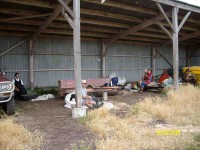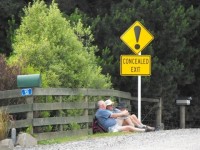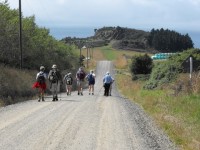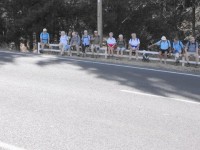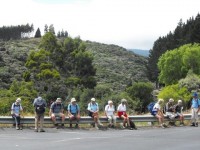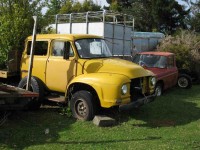Author: Ian
Deep Stream Water Supply
Brinns Point to Seacliff
Split Rock
Maori Peak background information
Puketeraki Beach
Suddaby Farm.
Well, although the tramp was called ‘Deep Stream Pipeline from George King Memorial Drive’, we never went near the George King Drive at all, except to pass by both ends of it on the way to our destination.
We [all 5 of us] parked the car on Wallace Ford Rd. outside Carters farmhouse, & made our way across some very dry & parched land to Withers farm, after having morning tea in a large farm shed.
Saddle Hill, Fairfield
3. 20/1/2010. Hikers. Overbridge, Coalstage Road, McMasters Road, Old Brighton Road, Fairfield Park, Morris Road, Overbridge. Leaders: Bev and Chris.
road with views out onto the Kaikorai Estuary and Stony Hill, etc.
And so back to the cars at the overbridge via Main Rd and Morris Rd. A very pleasant 10km on a nice day. We even passed a display of hand milking near the ostriches on Morris Rd. And the clouds were still hanging around Flagstaff, so we felt it had been a good choice. – Bob.
2. 15/6/2005. Hikers. Fairfield, Saddle Hill. Leaders: Margaret D, Nancy, Jean.
Spiers Road, return.
Protected: Committee Minutes 16/9/2009
Protected: Annual Report 2009
Protected: Annual General Meeting Minutes 27/8/2009
Protected: Committee Minutes 12/8/2009
Sullivans Dam
7.22/7/2009. Hikers. Sullivans Dam. Medium. Leaders: Lesley G, Bev H.
The Personal Locator Beacons
The Rescue Beacons are very simple to operate. One just flicks open the aerial, it springs up, and 60 seconds later, begins transmitting.
The signal is received at RCCNZ (Rescue Coordination Centre New Zealand) by two methods:
1. To get a rapid response, and to maximise the signal, one must be in clear air and high enough to see a clear horizon in the East-north-easterly direction. It will then be received by GEOS-11, a geostationary satellite stationed above the equator in the mid-Pacific.
The rescue beacon is a full Mayday or distress alarm, and will be acted on as such. So if the activation is accidental, or the situation improves and is no longer a Mayday, we must do more than just turn the beacon off (done by reloading the aerial) – we must also contact the authorities and withdraw the Mayday by contacting RCCNZ (0508) 472 269. ASAP. (Put this number in your mobile.)
– Information culled and adapted from a website Ken referred me to. Thanks, Ken. – Ian

